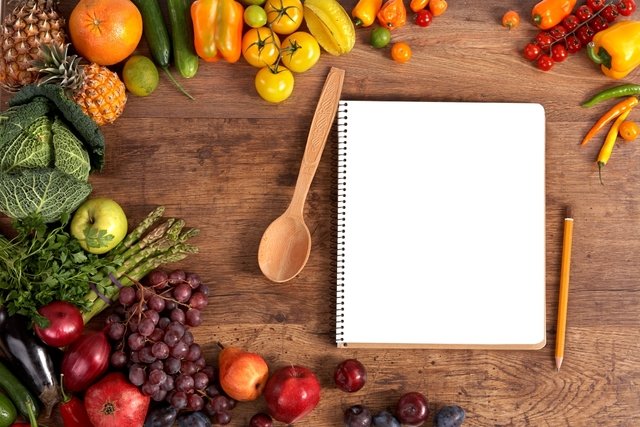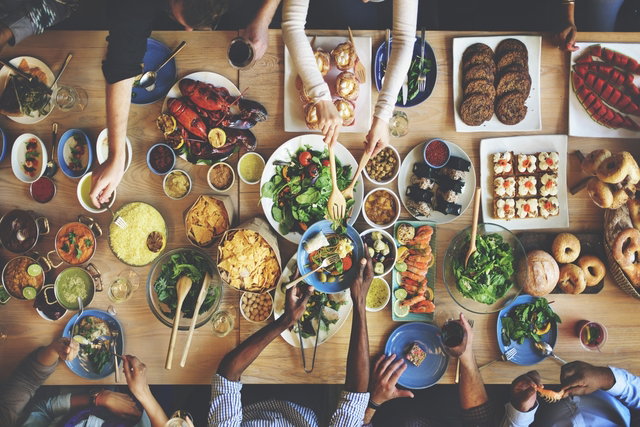A flexible diet is a diet based on controlling calories and macronutrients, such as carbohydrates, proteins and fats in the diet, helping to replace foods, and is recommended for those who want to lose weight, especially for people who have difficulty changing their eating habits.
However, despite having greater flexibility in choosing foods during the diet, it is important to prioritize the consumption of healthy foods, avoiding the intake of foods rich in sugar and fat, to help achieve the desired weight.
The flexible diet was developed by Anthony Collova and so far has no scientific proof. Therefore, to lose weight in a healthy and sustainable way, it is advisable to consult a nutritionist, to assess individual nutritional preferences and needs, helping to change eating behavior. See some tips for losing weight healthily.

How to follow the diet
To follow a flexible diet, the first step is to calculate the calories you should consume per day to lose weight and then the amount of macronutrients in the diet.
1. Calculation of dietary calories
To calculate the calories in the diet, one must consider the energy that the body spends to maintain basic functions, such as breathing, brain function or heartbeat, and the energy that is spent on “extra” activities carried out at the same time. throughout the day, such as cooking, working or exercising.
A simple way to calculate the calories in your diet is by entering your data into this calculator:
After calculating the calorie expenditure, 15 to 20% must be subtracted from this total, which will correspond to the calories in the weight loss diet.
For example: A person with a daily caloric expenditure of 2000 calories needs to reduce 300 (15%) to 400 (20%) calories from their diet. Therefore, this person should consume between 1600 and 1700 calories per day to lose weight.
2. Calculation of dietary macronutrients
According to Anthony Collova, to calculate the amount of macronutrients you should consume per day, simply follow the following recommendations:
- Protein: During the diet, it is recommended to consume 0.8 g of protein per kg of the weight you want to achieve. To do this, simply multiply the desired weight by 0.8;
- Fat: the recommended amount of fat is 0.3 to 0.4g per kg of the desired weight. For this calculation, you must multiply the weight you want to achieve by 0.3 or 04;
- Carbohydrates: the rest of the calories in the diet must be completed with foods that are sources of carbohydrates.
For example: a 36-year-old woman, weighing 50 kg, who does not practice physical activity and wants to reach 47 kg of body weight, needs to consume 1548 calories (1935 calories from the calculation of caloric expenditure – 20%) to lose weight, which must be distributed as in the calculation Next:
- Proteins: 0.8 g of protein X 47 kg (desired weight) = 37.6 g of protein. Each 1 g of protein contains 4 calories, so the total in 37.6 g of protein is equal to 150.4 calories;
- Fat: 0.4 g of fat X 47 kg (desired weight) = 18.8 g of fat. Each 1 g of fat contains 9 calories, so the total energy in 18.8 g of fat is equal to 169.2 calories;
- Carbohydrates: the amount of carbohydrates is calculated by reducing the total calories of the diet (1548) by the calories from protein (150.4) and fat (169.2). That is, the amount of energy from carbohydrates should be equal to 1228.4 calories per day.
As each 1 g of carbohydrate contains 4 calories, the amount of carbohydrates that should be consumed in the diet is 307.1 g per day.
3. Control macronutrients and calories in your diet
One option to help control the amount of macronutrients and calories you consume per day is to weigh food on home scales or check the amount of calories, proteins, carbohydrates and fats in each portion of the food on product labels. See how to read food labels.
Another practical way to control macronutrient consumption is using applications that can be installed on your smartphone and that calculate the amount of macronutrients and calories for each portion of the food reported.
What to eat

During the flexible diet, there are no food restrictions, it is only important to follow the recommended amount of macronutrients according to the weight you want to achieve.
In addition, the creator of the diet also recommends drinking 3 to 4 liters of water per day, which may also include teas, juices or coffee.
1. Food sources of carbohydrates
Food sources of carbohydrates are those known as “pasta” and include:
- Flours, such as wheat flour, cassava flour, rice flour, corn starch, tapioca, couscous and starch;
- Breads, such as wholemeal bread, Italian bread and French bread;
- Cereals, such as rice, pasta, quinoa, oats and corn;
- Tubers, such as English potatoes, sweet potatoes, cassava, yams and yams;
- Sugar and sweets in generalsuch as cake, ice cream, cookies and chocolate;
- Fruits, such as banana, watermelon, orange, pear, apple and tangerine;
- sugary drinks, such as juices, soft drinks, energy drinks and coconut water;
- Beer.
Additionally, legumes such as beans, soybeans, lentils, chickpeas and peas also have good amounts of carbohydrates. Check the amount of carbohydrates in your food.
2. Protein-rich foods
Foods rich in protein are mainly those of animal origin and include:
- Beef, chicken, turkey, fish and seafood;
- Eggs;
- Cheeses;
- Milk and natural yogurt.
Foods of plant origin, such as tofu, lentils, beans and chickpeas, and oats also contain great amounts of protein. However, these foods also contain carbohydrates, and it is important to be careful not to exceed the amount of this macronutrient in the diet. See the amount of protein in foods of animal and vegetable origin.
3. Fat-rich foods
Food sources of fat are:
- Vegetable fats, such as extra virgin olive oil, coconut oil and avocado oil;
- Butter;
- Oilseeds, such as chestnuts, almonds, peanuts and walnuts;
- seeds, such as chia, flaxseed, sesame, pumpkin and sunflower seeds.
Furthermore, foods such as salmon, sardines, tuna are also rich in fat and can be consumed. Know the amount of fat present in food.
Flexible diet menu
The following table contains an example of a 3-day menu, with 1500 calories:
This table is just a menu model, which may vary according to individual preferences and objective weight, and it is therefore recommended to consult a nutritionist to assess nutritional needs and prepare a personalized menu.
Advantages of flexible dieting
By reducing the amount of calories in your diet, a flexible diet can help you lose weight.
The flexible diet is easy to follow because there is no fixed menu that you must follow. Furthermore, the diet does not prohibit any food, helping you to include only the foods you like most in your diet.
Who shouldn’t go on the diet
As it does not consider vitamins from food, such as vitamin A, vitamin C and minerals, such as iron, zinc and potassium, the flexible diet is not recommended for those who suffer from a deficiency in any of these micronutrients, as in the case of anemia.
Furthermore, as it is a high-carb diet, the flexible diet may not be a good option for people who have diabetes.
A flexible diet does not encourage the introduction of new foods into your daily life, which can make it difficult to change your eating habits, which is one of the main factors responsible not only for weight loss, but also for maintaining the weight you have achieved.

Sign up for our newsletter and stay up to date with exclusive news
that can transform your routine!
Warning: Undefined array key "title" in /home/storelat/public_html/wp-content/plugins/link-whisper-premium/templates/frontend/related-posts.php on line 12
Warning: Undefined array key "title_tag" in /home/storelat/public_html/wp-content/plugins/link-whisper-premium/templates/frontend/related-posts.php on line 13



